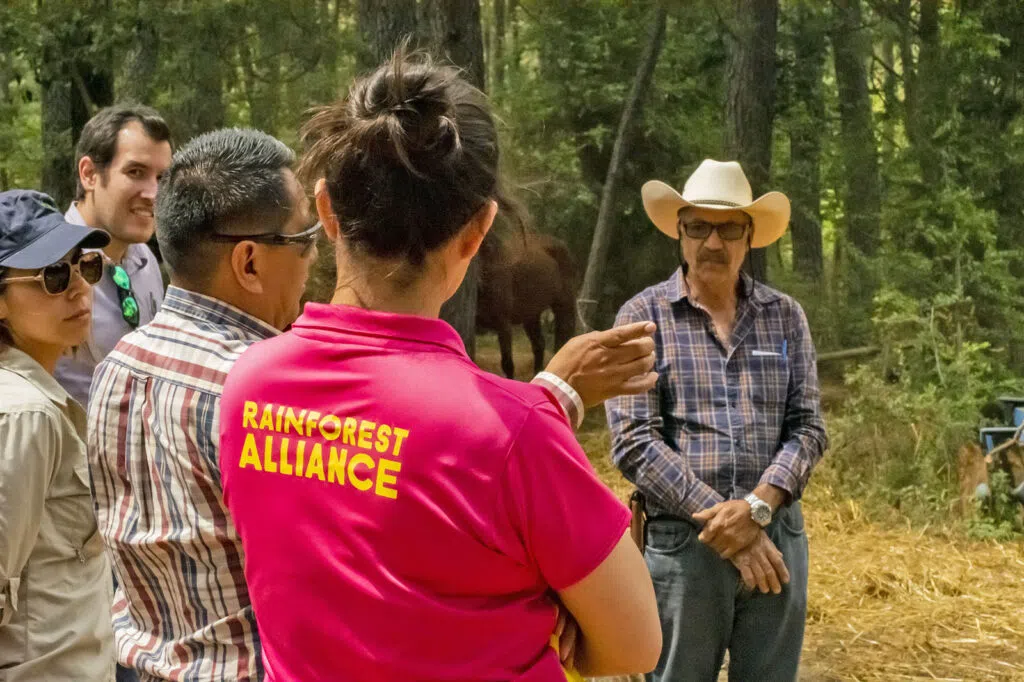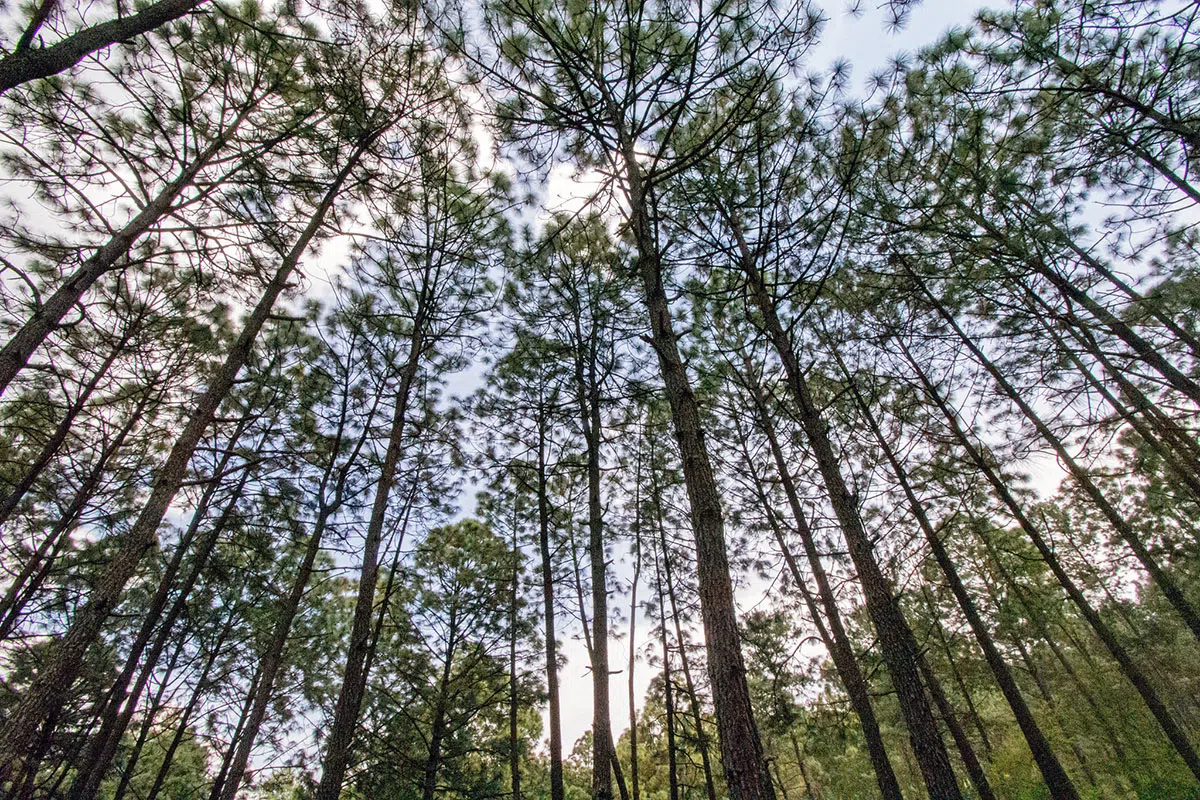This impact story was originally published by Rainforest Alliance here.
For 35 years, the Rainforest Alliance has been working to drive sustainability transformation in many of the world’s most challenging commodity sectors and critically important landscapes. Certification has been a valuable and longstanding tool—connecting farmers who embrace more sustainable growing practices with companies and consumers committed to better choices. At the same time, more and more companies are recognizing that sustainability isn’t just about the individual products or farms in their supply chains; it’s about the wider landscapes where their products originate.
Enter LandScale—a game-changing, all-in-one tool that allows users to assess risk and adaptively invest in, monitor, and measure sustainability impact at the landscape level. Initiated in 2019 by the Rainforest Alliance, Verra, and Conservation International, this holistic, user-friendly tool enables businesses and other landscape stakeholders to reliably assess, communicate, and deliver sustainability at scale.
In this Q&A, Jeff Milder, the Rainforest Alliance’s director of global policy and coalitions, reflects on how LandScale helps to strengthen landscape management—and highlights the many benefits for companies embracing this tool.
Jeff, can you describe for us exactly what LandScale is, and why it is needed?
LandScale is an assessment tool that generates landscape-level insights about sustainability. We created it to help companies, governments, investors, and project developers to deliver and credibly communicate about sustainability at scale. Whether it’s deforestation, water shortages, poverty, or land conflict, these issues simply can’t be viewed in isolation. That’s why over the last few years, we’ve seen an explosion of interest in working at a broader landscape level to address sustainability issues. This is true whether your goal is responsible sourcing, land-based investments, carbon or nature-based solutions projects, or economic development.
However, to really unlock the potential for investment in sustainable landscapes, we need a way to generate and share trusted information about landscape performance. That’s what enables, say, an impact investor in Zurich to confidently measure Environmental, Social and Governance (ESG) performance across a dozen different landscapes worldwide to assess investment potential. Or, from the ground up, it could support a set of communities in Sumatra to gain financial benefits from growing crops more sustainably and protecting tropical forests. We’ve never before had a common language of success or a source of trusted information about landscape sustainability. With LandScale, now we do.
“We’ve never before had a common language of success or a source of trusted information about landscape sustainability. With LandScale, now we do.”
Jeff Milder, Rainforest Alliance
So how does LandScale support companies on their sustainability journey?
First off, LandScale provides a structured approach to define and monitor sustainability performance in the places where companies do business. This can help companies engage with other landscape stakeholders to establish and work toward common goals. This foundation for collaboration is essential because when companies invest in landscape approaches, they’re usually doing it to address challenges they can’t solve alone.
LandScale also helps companies to be more rigorous in monitoring and evaluating their sustainability impacts, and to communicate the results of their work with greater credibility.
From your perspective as the Rainforest Alliance’s director of global policy and coalitions, how do landscape-scale assessments complement our certification program?
This is really a question of scale. LandScale and our certification program both aim to drive improvements in ecosystem health, human well-being, governance, and production systems. Both tools also include mechanisms to verify sustainability performance and make claims to communicate this performance to market partners and other stakeholders. But whereas our certification program works at the level of individual farms, plantations, or smallholder groups, LandScale measures performance across a whole landscape. And this assessment is holistic—considering the combined impact of various activities in the landscape.
And how does LandScale relate to the Rainforest Alliance’s Integrated Landscape Management approach?
The Rainforest Alliance’s Integrated Landscape Management approach strives to drive positive change beyond individual farms or forests and across whole landscapes, spanning tens of thousands to millions of hectares. This involves setting up and supporting multi-stakeholder groups—consisting of local communities, companies, civil society groups, and government officials— to develop and implement landscape action plans, policies and investments that advance sustainability holistically. The basic idea is that by bringing all these people together, we can break down silos that have impeded progress in the past. LandScale is like a compass that these initiatives can use to keep oriented to their sustainability goals, track progress, and measure impact.
Can you give some examples of what this looks like in practice? Where is LandScale being used, and what kind of results have users experienced so far?
To date, LandScale assessments have been conducted in more than 15 landscapes across five continents. These assessments have helped partners identify risks, collaborate across sectors to create shared goals, and develop data-driven landscape-scale action plans for advancing positive change.

For example, the Rainforest Alliance is working with the food and agri-business company Olam International, to conserve biodiversity and improve farmer livelihoods in Chiapas, Mexico. Together, we conducted a LandScale assessment of the Chiapas landscape to understand the impact of the project’s interventions. This helped partners identify where they could adapt their efforts to better meet their shared goals. Using LandScale also helped to highlight common interests shared by different stakeholders in the landscape, promoting greater collaboration. For instance, government agencies had not been directly involved in restoration activities on the ground but shared the mutual goal of preventing habitat destruction from uncontrolled fires.
And finally, Jeff, if a company wants to use LandScale, what are the key steps they should expect to take?
The LandScale online platform provides a clear five-step process to guide users through the assessment from start to finish. The first step is to recruit an assessment team and define the landscape boundary. The team then selects indicators and metrics relevant to their defined landscape and collects and analyzes available data for each of their metrics. The last step, after results have been validated, is to publish the landscape report on the LandScale platform. Information in the report can then be used to help drive the next steps in the sustainability journey—whether that is leveraging new sources of sustainability-linked finance, informing landscape action plans and policies, or enabling credible claims.
If you’re interested in using LandScale or just learning more, please visit www.landscale.org to get started.
